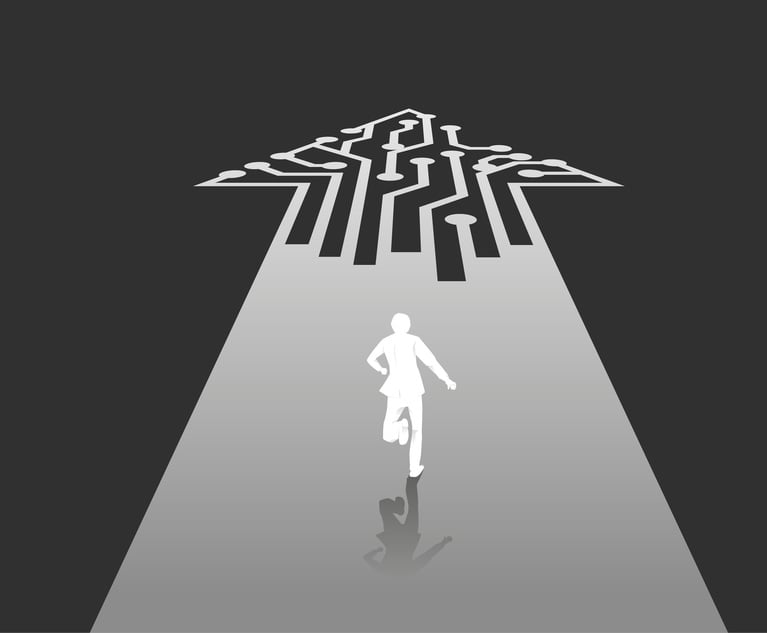SOMERSWORTH, N.H. — When lightning strikes, it's good to know who your friends are, and to have a good disaster recovery plan. On paper.
That's just some of the takeaway for Dan Clarke and Salmon Falls Community Credit Union, which sustained some $40,000 in damage but almost no down time after a powerful bolt from above fried the CU's technical infrastructure and injured a teller on the afternoon of Aug. 6.
Working with core processor Open Solutions Inc., ATM processor First Data, corporate CU EasCorp to make sure ACH balances got covered, insurer CUNA Mutual ("They told me this was a disaster and to go get what I needed.") and his local Staples store, Clarke and his small staff were serving members again the next morning and fully operational a couple days later.
Recommended For You
But not without some drama first.
The sky got dark that Monday afternoon and the rain began falling when Clarke, the $12.4 million CU's president and CEO, saw a blinding flash through the drawn shades of his office window and heard the thundering clap.
"I knew it hit close but didn't know how close until we smelled smoke coming from the janitor's closet," he says. "And then I was told one of my staff members was hurt, too."
The lightning had hit the building with such electrical force that it stunned a teller in contact with a metal drawer in a drive-up window. She was treated and released of a local hospital and was back at work in a couple days.
The fire department found no fire or hot spots with its thermal imaging gear but the wrap under the exterior vinyl on the building was extensively charred and pieces of siding were found in the parking lot 10 to 15 feet away from the side of the building.
Meanwhile, the janitor's closet contained more than a broom and a mop. It also housed crucial gear like a Cisco router that links the credit union to its service bureau. The router didn't survive the electrical assault.
"It hit us that hard," Clarke says. "There was no fire but the surge was so powerful that we've had to replace everything computer related, including all our desktop computers, the monitor on our ATM, our entire fire alarm system and our telephone system."
That afternoon, however, job one was making sure everyone was OK. Job two was getting the credit union back up and running.
The CU's core processes run on a CU*Star platform through the former re:Member Data Services operation in Indianapolis now owned by Open Solutions, and that's who Clarke turned to first, after tending to staff.
There he encountered Eric Romack, the service bureau staffer who worked closely with Clarke that night to get the credit union connected to the service bureau through a backup dial-up connection.
Working by cellphone, Romack helped Clarke set up a new router that Cisco Systems hustled to the site the next morning to replace the fried unit that connects the CU to its service bureau through a VPN on a T1 line.
By Tuesday afternoon, the system was back up well enough to use the normal backup system. But they had to wait a couple days for the local phone company to restore the line to full service. ("That was one of the few disappointments in this," Clarke says.)
Until then, the dial-up connection handled most of the routine transactional traffic with the service bureau while trusty cellphones were used to handle the rest. "We'd call Open Solutions to get things like balances over the phone," Clarke says. "We used a lot of our cellphone minutes, that's for sure."
Many of those minutes were spent talking to Romack back in Indianapolis while the core system was restored.
"We see a lot of power surges, but this situation was unusual in that the building was actually hit by the lightning so bad that they lost everything," Romack says. "And I want to give credit to Cisco, too. They guarantee four hours for delivery of a router like that, and their technician was there in about an hour and a half or so and helped Dan set it up."
Clarke, meanwhile, says that "while I'm a bit of a technology geek, I'm not that much of one but I did learn a lot going through some of those arcane commands Eric and I used to get the router up and running. I'm also our Webmaster, so I spent time at home accessing our Web site and updating it with information about what was going on while we were in the process of recovering."
In addition to some new technical chops, Clarke says he learned the value of a good disaster recovery plan. "We pulled ours off the shelf and followed it through the escalation and recovery process," he says. He also appreciated having regularly backed up important management files on a portable hard drive.
And he gained renewed appreciation "for the wonderful world of cellphones and Blackberries. Our members could stay in touch with us since we forwarded calls to those and I could do e-mail to everyone I needed to, including the NCUA and the state regulators, who by the way, were fantastic to us as well," Clarke says.
Clarke says he was working at another credit union 10 years ago when lightning hit a flagpole outside that building and knocked out its in-house core processing system.
"One more reason I'm a big proponent of service bureaus like this," he says, adding, "Ten years ago, we could never have recovered this quickly."
And as for the building itself, because of its newness the original project managers still were available to inspect it.
"They were amazed the damage wasn't worse than it was," Clarke says. "They said the lightning went from one side of the building completely to the other side, which has to be around 100 feet."
And the smoke in the janitor's closet?
"It was from a ground wire to the phone system," Clarke says. "I guess it did its job."
© Touchpoint Markets, All Rights Reserved. Request academic re-use from www.copyright.com. All other uses, submit a request to [email protected]. For more inforrmation visit Asset & Logo Licensing.






